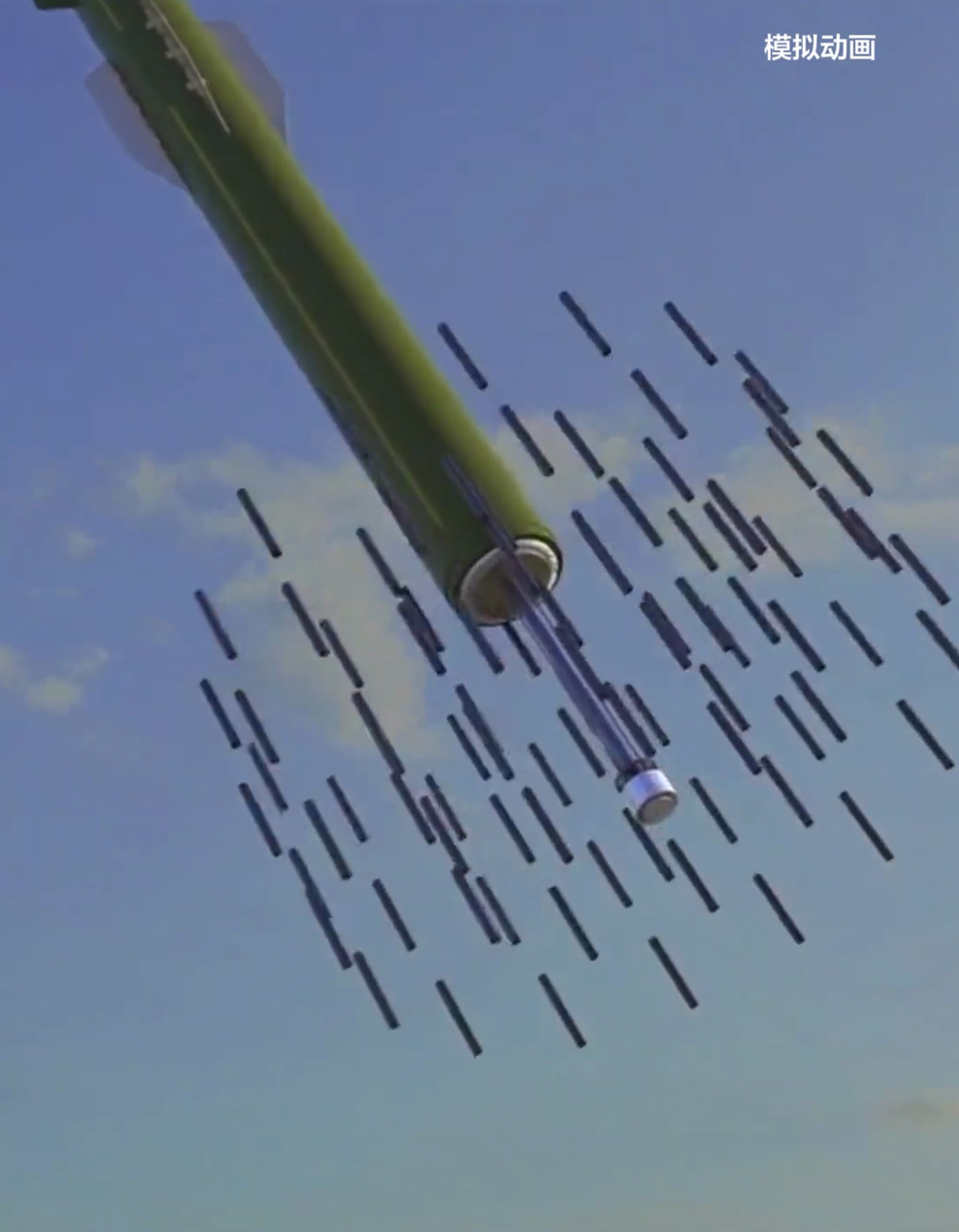China’s state broadcaster posted a video on Thursday featuring what appeared to be a new type of graphite bomb that it said could knock out enemy power stations and cause a “complete loss of electricity” across a targeted area.
A social media channel run by CCTV shared an animated video showing the weapon being launched from a land-based vehicle before ejecting 90 cylinder-shaped submunitions.
These canisters bounced upon impact before detonating mid-air, dispersing fine, chemically treated carbon filaments designed to short-circuit high-voltage power infrastructure.
The weapon aims to disrupt enemy command and control systems by triggering widespread electrical outages over an area of at least 10,000 square metres (107,639 sq ft), according to the channel.
CCTV cited an account from the state-owned China Aerospace Science and Technology Corporation (CASC), a contractor affiliated with the Ministry of National Defence.
However, the broadcaster offered no details about the weapon’s designation or its status. It referred to the weapon as “a mysterious type of domestically made missile”. It remains unclear which stage of development it has reached, or if it has been deployed by the Chinese military.
While CCTV did not explicitly identify the weapon as a graphite bomb, its characteristics closely match known graphite munitions.
According to the video, it has a range of 290km (180 miles) and a warhead weighing 490kg (1,080lbs), making it suitable for attacks on military substations and other electrical infrastructure.
Comments posted beneath the video quickly speculated about the potential use of the weapon against Taiwan’s power supply infrastructure.
There has been little said publicly about the People’s Liberation Army’s (PLA) graphite bombs.
Chen Chundi, an editor at the semi-official Modern Ships magazine, published a commentary in 2017 that described graphite bombs as “game-changing” unconventional weapons for the PLA in future conflicts, noting that attacks on electrical infrastructure had long been a strategic priority in warfare.
He said modern conflict strategies had increasingly shifted from destroying enemy troops to paralysing operational systems, notably by striking command, control, communications, computers, intelligence, surveillance, and reconnaissance (C4ISR) networks. Chen added that graphite bombs offered a novel method to bypass direct attacks on heavily fortified facilities and instead achieve indirect system paralysis.
Chen said these weapons had already entered service with the Chinese military, but cited an earlier, less advanced variant with roughly half the warhead weight and coverage area.
He also noted that graphite bombs could be equipped with a wind-corrected munitions dispenser (WCMD), a tail-mounted guidance device to improve delivery precision. Chen suggested the WCMD could integrate BeiDou satellite navigation for greater accuracy.
“In the future, this weapon will likely be adapted for Chinese cruise missiles, delivering devastating effects in wartime,” Chen said.
Such bombs have long been employed by the US military.
In Iraq, Tomahawk cruise missiles equipped with BLU-114/B graphite warheads disabled 85 per cent of the national grid, plunging military command, air defence, and government institutions into darkness.
In the Kosovo conflict, American F-117 stealth fighters dropped CBU-102 bombs with BLU-114/B warheads, crippling 70 per cent of Serbia’s electricity infrastructure and forcing Belgrade to accept the demands of Nato, the transatlantic security alliance.
